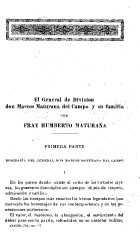Resultados: visualización detallada
Registro 3 de 88 para la búsqueda Autor E. G.
Aislamiento del virus parainfluenza tipo 3 en ovinos con neumonía. Comunicación preliminar
Patricio Berríos E.; Departamentos de Medicina Preventiva Animal y Patología Animal. Facultad de Ciencias Veterinarias y Pecuarias. Universidad de Chile
Carlos González R.; Departamentos de Medicina Preventiva Animal y Patología Animal. Facultad de Ciencias Veterinarias y Pecuarias. Universidad de Chile
Javier Enciso G.; Departamentos de Medicina Preventiva Animal y Patología Animal. Facultad de Ciencias Veterinarias y Pecuarias. Universidad de Chile
María de la Cruz Santibáñez Z.; Departamentos de Medicina Preventiva Animal y Patología Animal. Facultad de Ciencias Veterinarias y Pecuarias. Universidad de Chile
1991
-
Datos de edición
Avances en Ciencias Veterinarias; Vol. 6, No. 2 (1991): Julio-Diciembre
Universidad de Chile - Tipo de Documento Libro
-
Descripción
It is reported the isolation of two strains of parainfluenza type 3 in ovine pneumonic lambs from the Región Metropolitana, Chile. Lungs presented intersticial lesions of viral type. Bronchial epitheliurn short, cytoplasmic inclusion bodies. Both strains presented typic cytopathic efect in ovine and bovine fetal kidney, characterized by the initial formation of large, rounded and refringent cells. Cytoplasmic inclusion bodies were obse ...It is reported the isolation of two strains of parainfluenza type 3 in ovine pneumonic lambs from the Región Metropolitana, Chile. Lungs presented intersticial lesions of viral type. Bronchial epitheliurn short, cytoplasmic inclusion bodies. Both strains presented typic cytopathic efect in ovine and bovine fetal kidney, characterized by the initial formation of large, rounded and refringent cells. Cytoplasmic inclusion bodies were observed in both type of cell cultures; only in ovine fetal kidney is was observed the presence of cellular sincitios. Some biological characteristics were studied such as capacity to hemoaglutinate and to absorb guinea pig erytrocytes, sensitivity to pH 3.0 and 9.0, ether and chloroform, trypsin (1 %) and the temperature of 56ºC during 30 minutes. Serological typification was performed by the inhibición of the hemaglutination test with specific antiserurn: According with the results both strain were clasifed as parainfluenza type 3 virus, a Paramyxovirus from the family Paramyxoviridae. Key Words: Parainfluenza type 3 virus, lambs, pneumonia. Palabras claves: Virus parainfluenza tipo 3, ovinos, neumonía.Facultad de Ciencias Veterinarias y Pecuarias
- Identificador 34576










